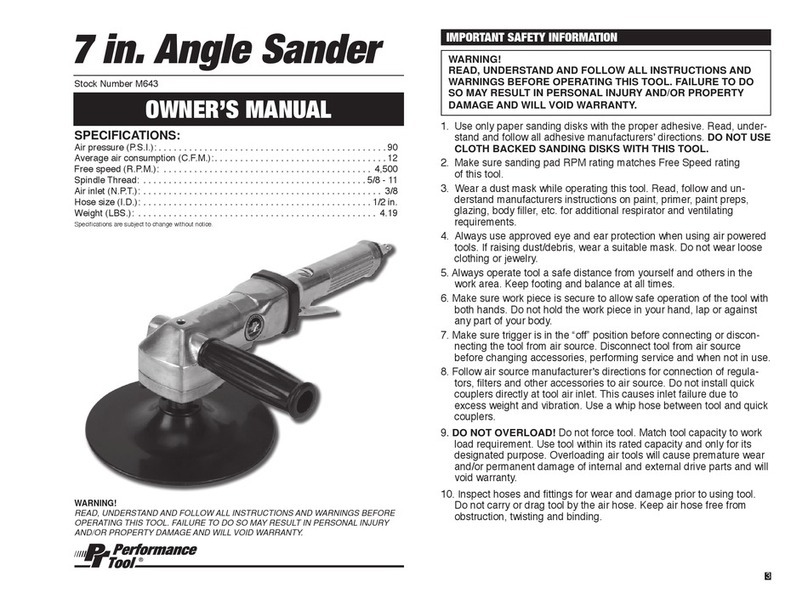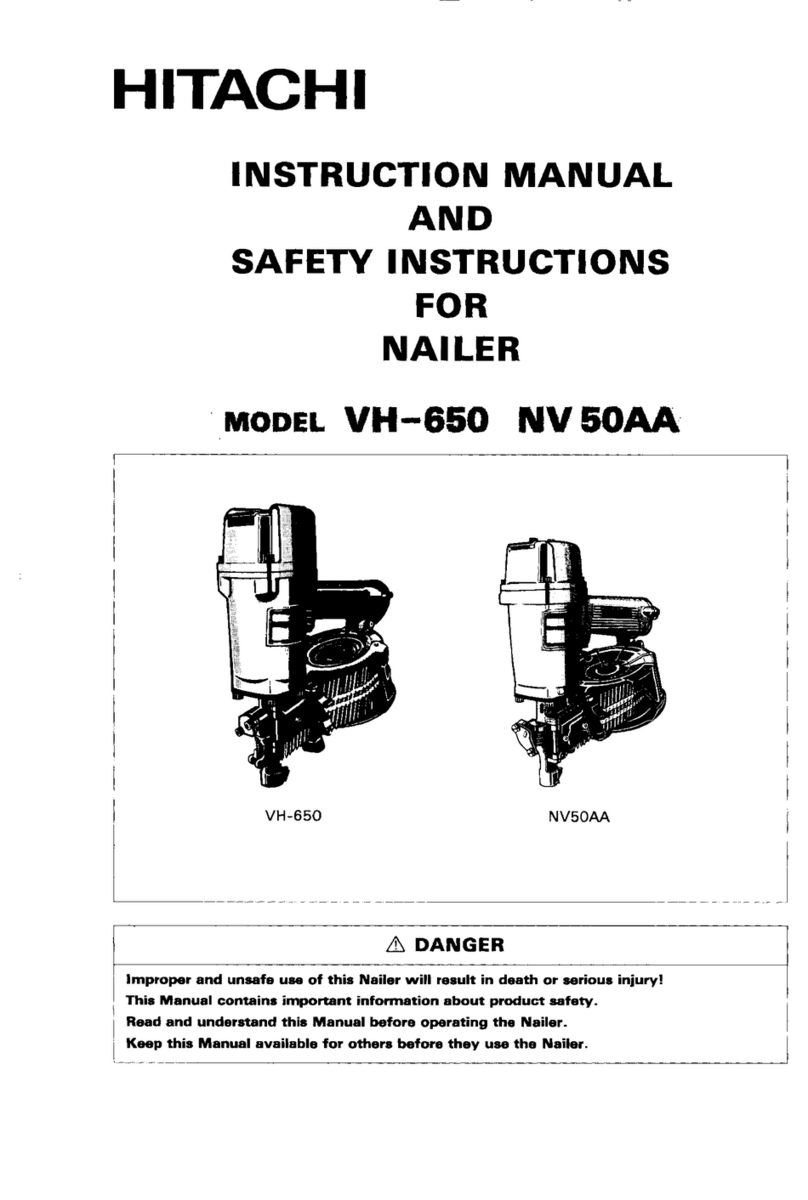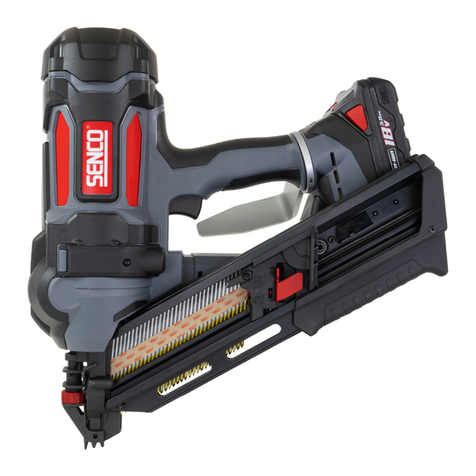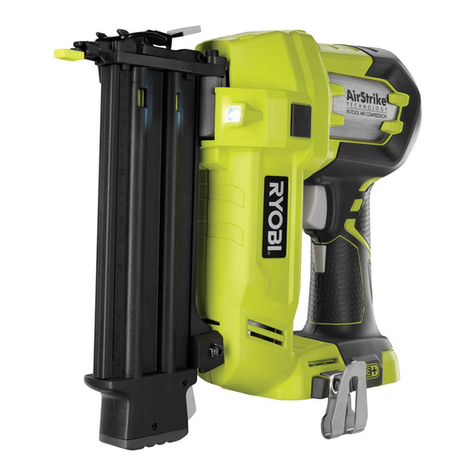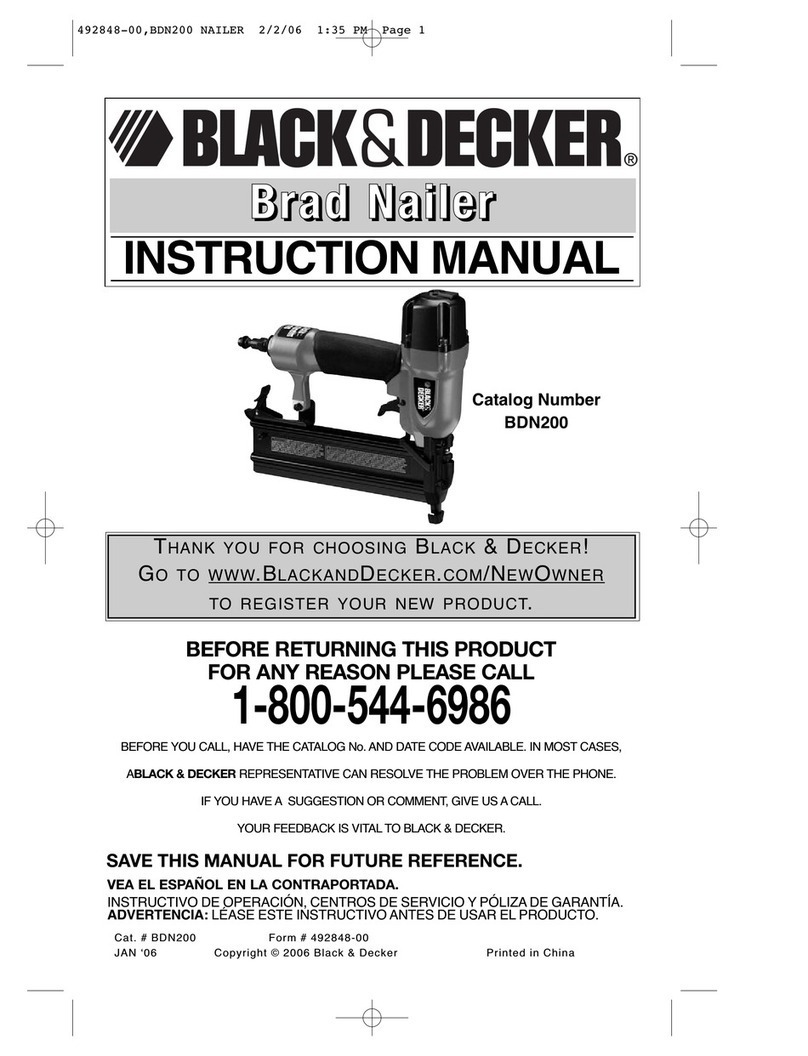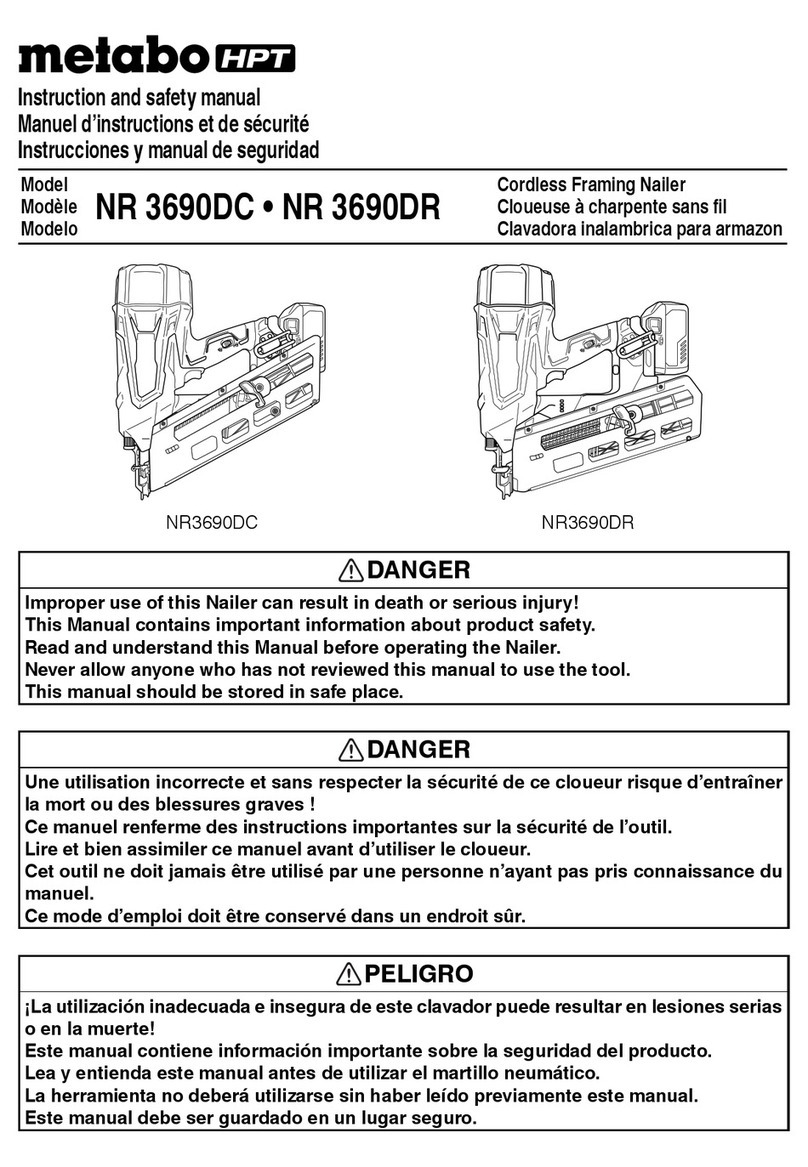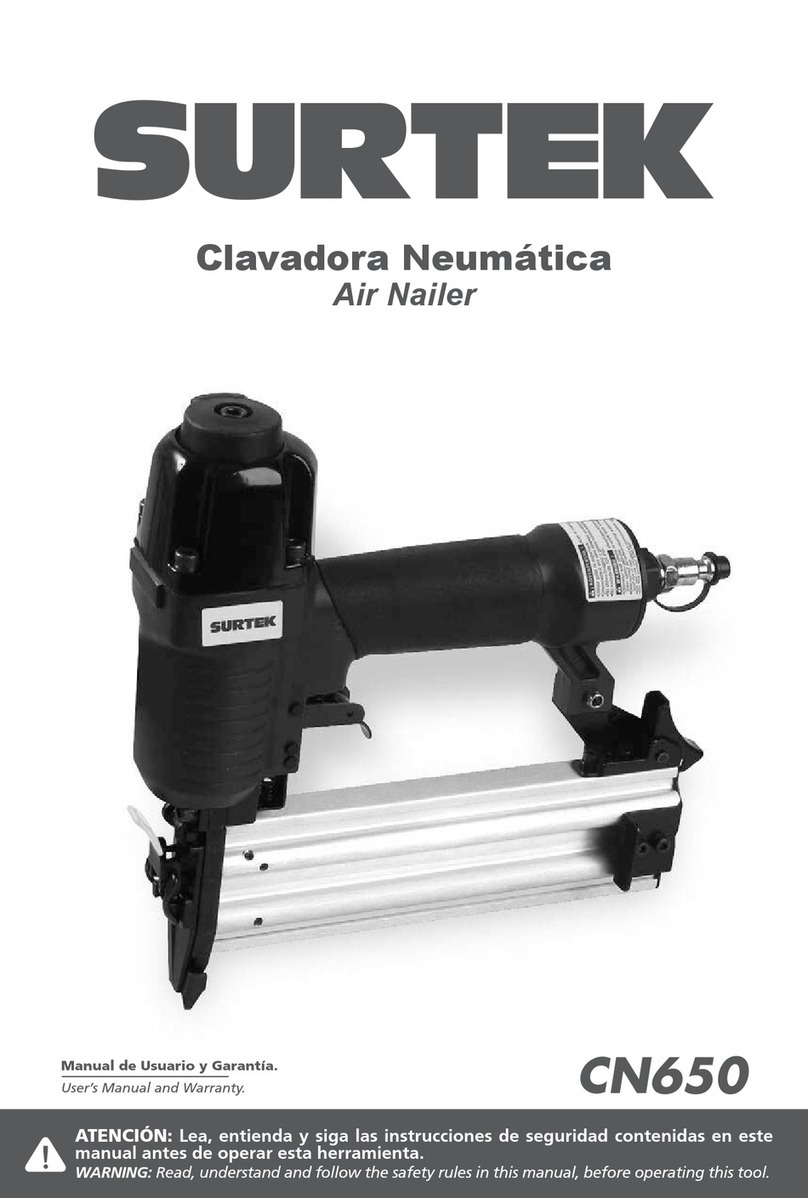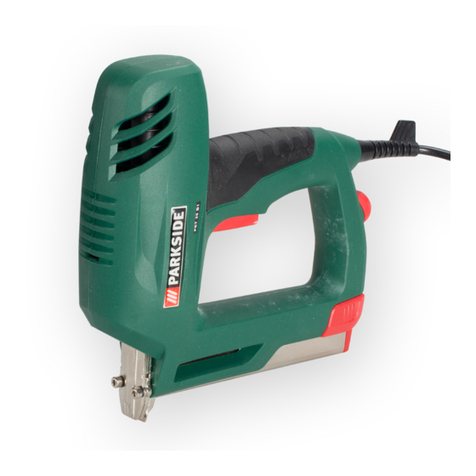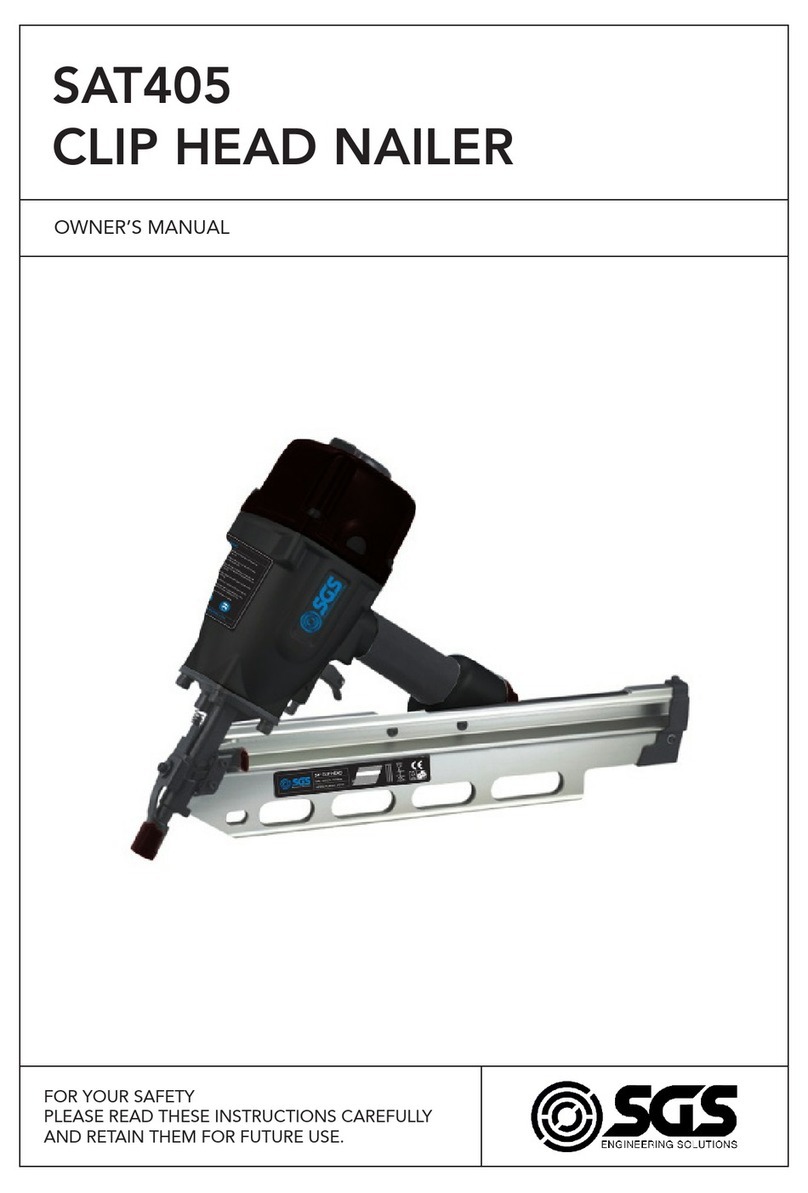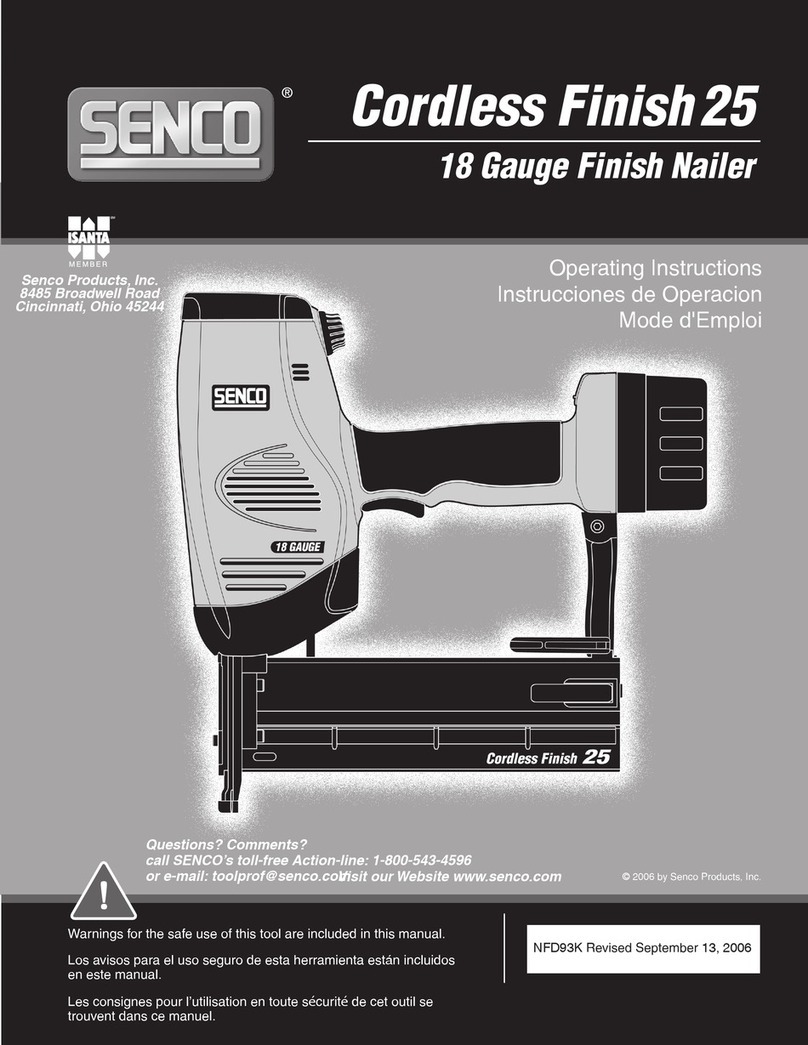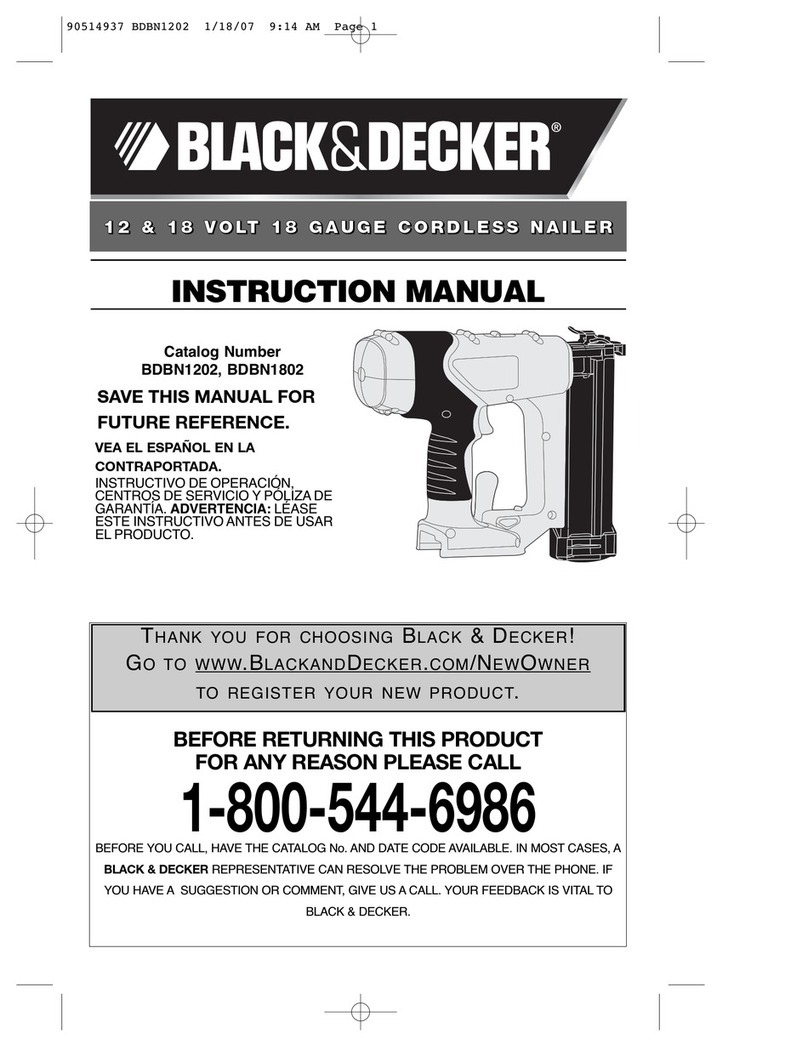PAGE 3
PAGE 2
SPECIFICATION
TOOL MODEL SAT403
TOOL LENGTH 250 MM
TOOL HEIGHT 240 MM
TOOL WIDTH 55 MM
TOOL WEIGHT 1.46 KG
MAXIMUM OPERATING PRESSURE 115 PSI
RECOMMENDED OPERATING PRESSURE 75-100 PSI
MAGAZINE CAPACITY 100 NAILS / 80 STAPLES
FASTNER GAUGE 18 GAUGE BRAD NAILS
18 GAUGE CROWN STAPLES
FASTNER LENGTHS NAILS (MM) 15, 20, 25, 30, 35, 40, 45, 50
FASTNER LENGTHS NAILS (IN.) 5/8, 3/4, 1, 1-1/4, 1-3/8, 1-1/2,
1-3/4, 2
FASTNER LENGTHS STAPLES (MM) 13, 16, 19, 25, 32, 38, 40
FASTNER LENGTHS STAPLES (IN.) 1/2, 5/8, 3/4, 1, 1-1/4,
1-1/2
SAFETY GUIDELINES
Please read and fully understand the manual for information relating to protecting
YOUR SAFETY and PREVENTING EQUIPMENT PROBLEMS.
Indicates an immediately hazardous situation which if not
avoided will result in death or serious injury.
Indicates a potentially hazardous situation which if not
avoided could result in death or serious injury.
Alerts the operator to useful information.
SAFETY INSTRUCTIONS
1. Read and understand tool labels and manual. Failure to follow warnings
could result in DEATH or SERIOUS INJURY.
2. Operator and others in work area MUST wear safety glasses.
3. Keep fingers AWAY from trigger when not driving fasteners to avoid ac-
cidental firing.
4. Never point tool at any part of your body or others.
5. Never use oxygen or other bottled gasses. Explosion and serious per-
sonal injury could result.
6. Wear ear protection to safe-guard against possible hearing loss.
7. Use clean, dry, regulated, compressed air at 75 to 100 PSI.
8. Only use air hose that is rated for a maximum working pressure of at least
150 PSI or 150% of the maximum system pressure, which ever is greater.
9. Disconnect tool from air supply hose before performing tool mainte-
nance, clearing a jammed fastener, leaving work area, moving tool to another
location or handing the tool to another person.
10. Never use tool if safety, trigger or springs are inoperable, missing or
damaged. Do not alter or remove safety, trigger or springs. Make daily in-
spections for free movement of trigger and safety mechanism.
11. Connect tool to air supply before loading fasteners to prevent a fas-
tener from being fired during connection.
12. Operator and bystanders to wear helmets to safeguard against injuries.
13. Do not load fasteners with trigger or safety depressed to prevent
unintentional firing of a fastener.
14. Do not drive fasteners close to the edge of the work-piece. The work-
piece is likely to split allowing the fasteners to fly free or ricochet.
15. Fire fasteners into work-piece only - never into materials too hard to
penetrate. Do not drive fasteners on top of other fasteners, or with the tool
at too steep an angle; the fasteners can ricochet causing personal injury.
16. Always carry a fastener-driving tool using only the handgrip and never
with the trigger actuated. Never carry the tool by the hose or pull the hose to
move the tool.
